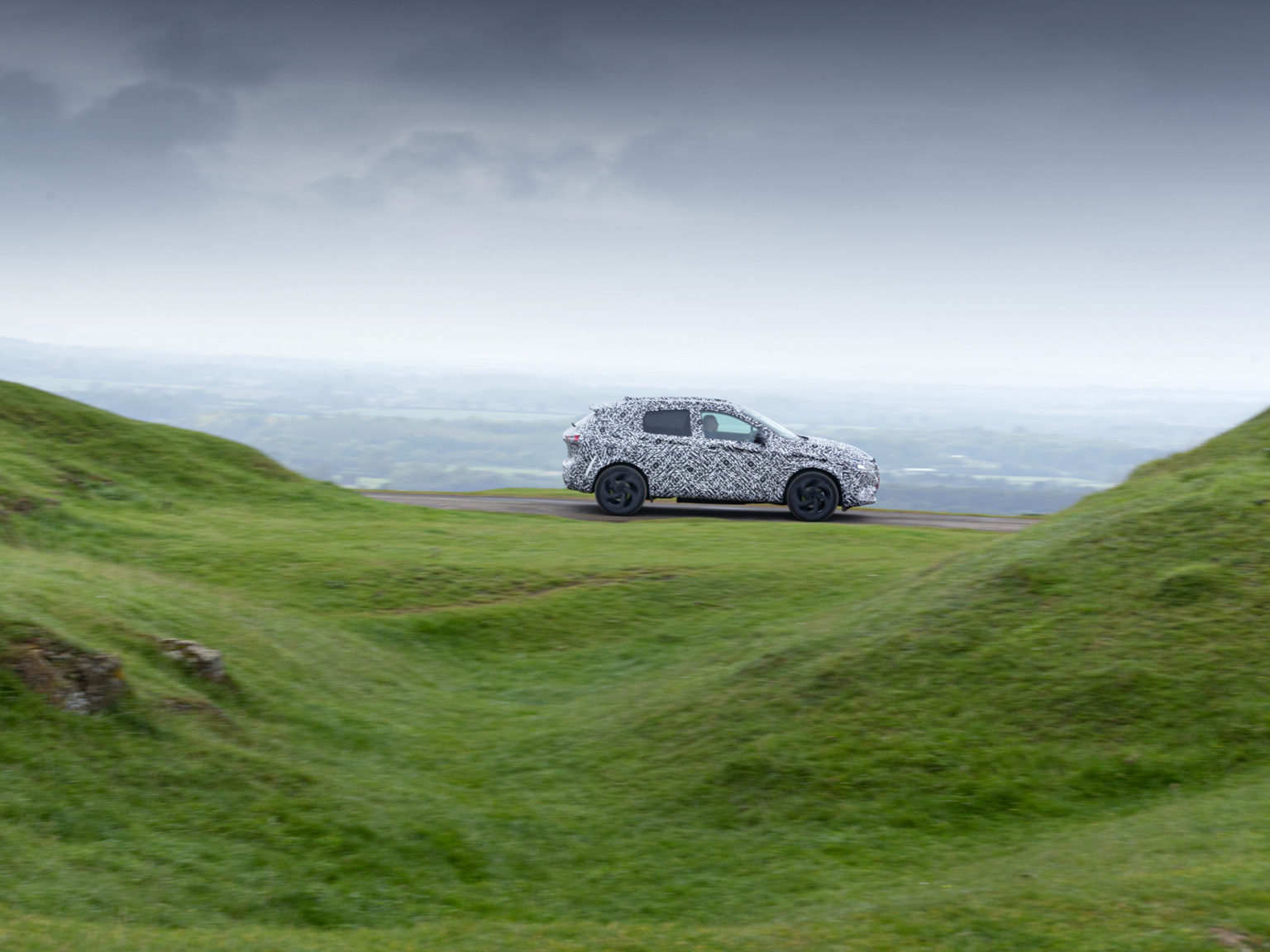You’ve seen the wrapped vehicles in spy photos. If you live in California, Arizona, or Michigan, you’ve also likely seen them on the streets. Automakers use camouflage wrap on their prototypes, mules, and modified models.
In just under a year, Nissan’s test engineering team has gone through over two miles of the adhesive camouflage as they work to conceal the company’s vehicles that are in development. The automaker recently announced that a large number of models are in the process of making their way to U.S. shores by 2022. That includes the recently arrived Nissan Rogue, Kicks, and Armada, and the Frontier and Pathfinder, which are arriving this summer.
Why camouflage? It helps keep company secrets.
Camo can hide body design elements that may foretell a specific type of engine, exhaust, or drivetrain, and hide sheet metal design that isn’t in its final form yet. While a trained eye can figure out many of the hidden secrets, the camouflage helps the company make a marketing splash with the greater public when the market-ready model debuts.
The Nissan Pathfinder was heavily disguised ahead of its debut.Photo courtesy of Nissan North America
“When we reveal a vehicle, it should be a very momentous occasion,” explains Mike Rosinski, a vehicle development manager at Nissan North America. “However, before a vehicle is launched, we have months of work where we put the vehicle on actual roads for testing. In order to not take away from the excitement of the reveal, we have to keep the cars always in disguise and under wraps.”
Prying eyes are always interested in vehicle testing. Automakers use the camo as well as garage lockup, transportation in encolested trailers, and testing in remote locations away from the general population in order to avoid their secrets getting out. Most companies own testing centers in multiple states, which allows them to control access to the products while they’re being engineered. It can take the better part of a decade to develop a new product.
“Spy photographers will literally camp outside our testing centers,” Rosinski says. “Sometimes, they even hide in the bushes. If spy photos get out, they can give our competitors a real advantage.”
Michael Alcantar applying camo to the interior of the 2022 Nissan Pathfinder.Photo courtesy of Nissan North America
One of the most important elements of the camo is its pattern. Distinct black and white patterns are developed specifically to make it hard for a camera lens to focus. Nissan deploys a range of camo patterns and randomly assigns them.
“The patterns are key,” says Sherri Bruder, manager, Engineering Fleet, Nissan North America. “If the material was just black or white or beige, you could see the body lines of the vehicle. The patterns make it tougher to see those body lines.”
Covering the vehicle in camo isn’t always good enough. Companies often take measures to conceal specific elements by painting them black, hiding interior instrument panels, removing automaker badges, and adding tape around the headlights, which helps to hide their new shape. A layer of padding or an extra structure taped on the back of the vehicle can further disguise it.
To conceal the Pathfinder’s new grille, Nissan technicians added materials underneath the camo to greatly distort its appearance.
“Truly we have become masters in wrapping our ‘presents’ for the future,” says Bruder of her department. “Our team has a sense of pride knowing what we’re doing is very important. The process starts with us to make sure that we provide a wow-factor for all of the eyes that are watching for what’s next at Nissan.”








